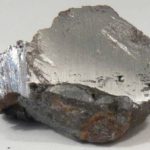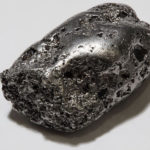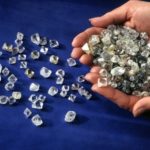Interesting facts about gold
 Gold is the most famous metal in the world, already serving people for thousands of years with a measure of material wealth and a standard of values. Of course, there are more expensive minerals and metals, but gold has always been used as the most weighty financial argument. It is appreciated everywhere, in any country, from Africa to Northern Europe, and everywhere people look at the gold bar with the same greedy interest.
Gold is the most famous metal in the world, already serving people for thousands of years with a measure of material wealth and a standard of values. Of course, there are more expensive minerals and metals, but gold has always been used as the most weighty financial argument. It is appreciated everywhere, in any country, from Africa to Northern Europe, and everywhere people look at the gold bar with the same greedy interest.
The Russian word “gold” is actually a modified form of the adjective “yellow.”
Gold is extremely soft and heavy metal. Its hardness is comparable to the hardness of the human nail, and a gold ball with a diameter of 46.2 mm weighs a kilogram.
Gold is so plastic that it can be used to forge semi-transparent sheets with a thickness of only 100 nanometers, or threads for sewing.
Organic gold compounds are used in medicine for the treatment of many serious diseases, for example, rheumatoid arthritis.
Scientists believe that gold and other metals heavier than iron arose as a result of the destruction of neutron stars.
Since the discovery of gold to the present day, people have extracted about 161,000 tons of this metal. The market value of all this wealth is now 9-10 trillion dollars.
Russia occupies a leading position in the world for the production of loose gold.
In the middle of the XX century, scientists accidentally embodied the dream of alchemists – turned mercury into gold. Rare metal has become a by-product of a complex experiment to study mercury. Despite the fact that the fairy tale became a reality, such gold mining is completely useless – it is much more expensive than obtaining this metal even from the poorest ores.
Gold is one of the foundations of the modern world economy, since this metal does not rust, is widely used in industry and is rare enough to always have a high price.
Modern world reserves of gold are estimated at about 32 thousand tons – if you melt out all this metal cube, its side will be only 12 meters.
Gold leaf is edible and widely used in cooking for decorating desserts.
The ransom for the Inca ruler Atavalpa, paid to the Spanish conquistadors by his subjects, consisted of 700 gold and 300 silver plates taken from the walls, floor and ceiling of the local church. This is the largest military ransom for the entire period of human internecine strife.
Every hour in the world more steel is smelted than the amount of gold produced in human history.
Gold ore was discovered on all continents of the Earth, although it remains a rare metal.
It is believed that about 80% of the total gold reserve of our planet is still in the Earth’s thickness.
One ounce of gold can be stretched in a thread about 80 kilometers long.
One of the largest gold nuggets ever discovered by a man weighed 72 kilograms. He lay almost on the surface of the earth and was called “Hello, stranger.”
Gold does not cause allergies, so gold jewelry can be worn even by people with extremely sensitive skin.
Gold Olympic medals long ago stopped making gold, although originally they were really cast from precious metal. Now, only 6 grams of gold are spent on the gold coating of medals from other metals.
Even 1200 years ago, the Egyptians separated the golden grains from the sand from the seabed with the help of unshaved sheepskin. Probably, this is how the well-known myth of the “Golden Fleece” arose.
The mention of gold is found in the Bible at least four hundred times.
The ancient Greeks considered gold a mixture of water and sun rays, the Incas – tears of the sun god and his gift to people, the ancient Egyptians – the skin of the god Ra.
The world’s first gold and silver alloy coin was minted by the Lydians in 560 BC.



























